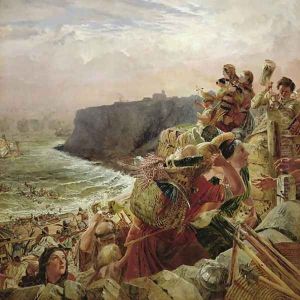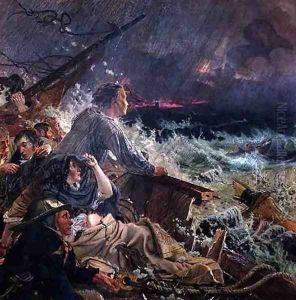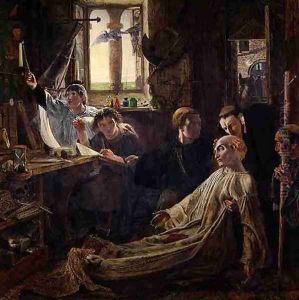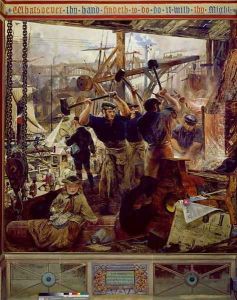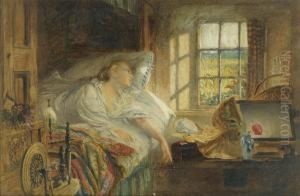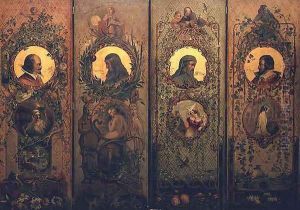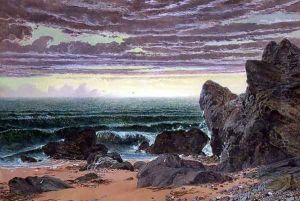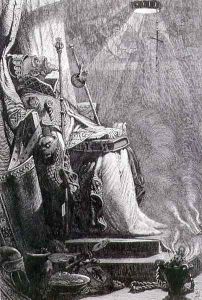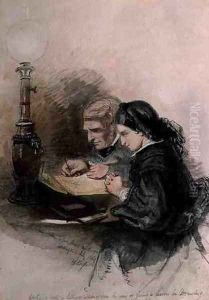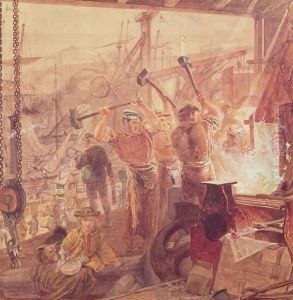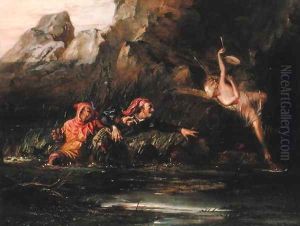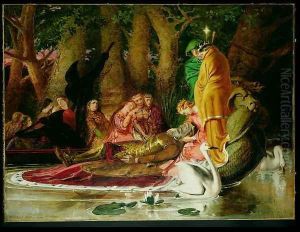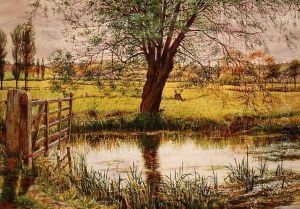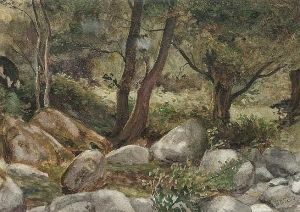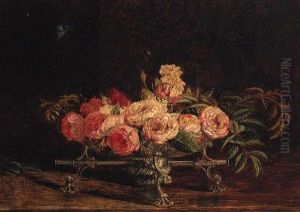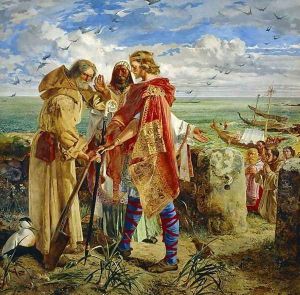





King Egfrid d.685 Landing on the Farne Islands to Summon Cuthbert to Become a Bishop, c.1861
-
About Reproduction
Discover the allure of art with our faithful reproduction of "King Egfrid d.685 Landing on the Farne Islands to Summon Cuthbert to Become a Bishop, c.1861", originally brought to life by the talented William Bell Scott. Unlike posters or prints, our hand-painted oil painting breathes an unique sense of depth and texture into your space. Every detail, every stroke, and every texture is meticulously recreated, paying the perfect homage to William Bell Scott and his artistic vision.
Owning this piece is more than just decoration - it's a statement of your refined taste in art. Let the vibrant colors and intricate details of this replica serve as a daily reminder of the beauty in our world. Elevate your decor and appreciate the richness of art with our replica of this masterpiece.
-
Painting Description
"King Egfrid d.685 Landing on the Farne Islands to Summon Cuthbert to Become a Bishop, c.1861" is a significant historical painting by the Scottish artist William Bell Scott, created around 1861. This artwork delves into the rich tapestry of Anglo-Saxon England, illustrating a pivotal moment in the history of the Christian church in the British Isles. The painting captures the dramatic encounter between King Ecgfrith of Northumbria and Saint Cuthbert on the Farne Islands, a moment that is emblematic of the intertwining of political power and religious authority during the early medieval period.
William Bell Scott, born in 1811 and passing in 1890, was a notable figure in the 19th-century British art scene, not only for his paintings but also for his contributions as a poet and art teacher. His works often explored historical and literary themes, reflecting a deep engagement with the cultural and historical narratives of Britain.
The depicted scene is based on a significant event in the history of the English church. King Ecgfrith, who reigned from 670 to 685, is shown arriving at the Farne Islands, off the coast of Northumberland, to persuade Cuthbert to leave his hermit life and assume the role of Bishop of Lindisfarne. Saint Cuthbert, renowned for his piety and miracles, had a profound influence on the Christian faith in Northern England. His eventual acceptance of the bishopric under the insistence of King Ecgfrith marked a crucial moment in consolidating the Christian faith in the region, blending the spiritual authority of the church with the temporal power of the monarchy.
Scott's painting is not merely a historical recount but a vivid portrayal that captures the essence of this historical encounter. The artwork is imbued with the dramatic tension of the moment, set against the rugged beauty of the Farne Islands. The composition, color palette, and attention to detail not only bring the scene to life but also reflect the artist's interest in the symbolic and emotional potential of historical narratives.
"King Egfrid d.685 Landing on the Farne Islands to Summon Cuthbert to Become a Bishop, c.1861" stands as a testament to William Bell Scott's mastery in historical painting and his ability to weave complex narratives into compelling visual forms. This work offers viewers a window into the past, inviting reflection on the complex interplay of faith, power, and personality that has shaped the course of British history.
-
Lead Time & Shipping
When you order this oil painting replica, it typically takes 2-3 weeks to paint. If the artwork is more complex, it might need a little more time to ensure the best quality. Once it's ready, we'll send you a photo for your approval. After you give the green light, we'll ship it to you for free.
-
Return & Refund
We believe in the quality of our hand-painted oil painting reproductions, and your satisfaction is our priority. If for any reason, you are not completely satisfied with your purchase, we offer a 45-day return policy. You can return your artwork within 45 days of receipt and receive a full refund. Please note that the artwork must be returned in the original packaging and in the same condition as it was received.





